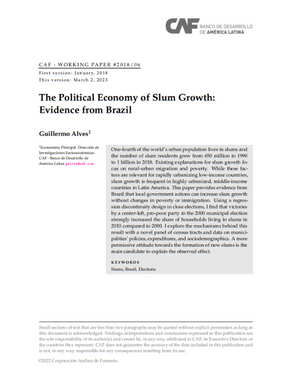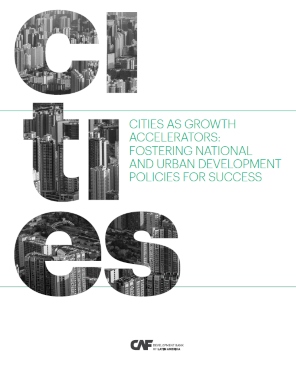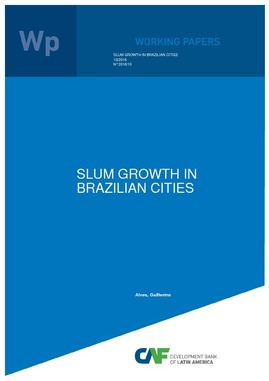The Political Economy of Slum Growth: Evidence from Brazil
Abstract
One-fourth of the world’s urban population lives in slums and the number of slum residents grew from 650 million in 1990 to 1 billion in 2018. Existing explanations for slum growth focus on rural-urban migration and poverty. While these factors are relevant for rapidly urbanizing low-income countries, slum growth is frequent in highly urbanized, middle-income countries in Latin America. This paper provides evidence from Brazil that local government actions can increase slum growth without changes in poverty or immigration. Using a regression discontinuity design in close elections, I find that victories by a center-left, pro-poor party in the 2000 municipal election strongly increased the share of households living in slums in 2010 compared to 2000. I explore the mechanisms behind this result with a novel panel of census tracts and data on municipalities’ policies, expenditures, and sociodemographics. A more permissive attitude towards the formation of new slums is the main candidate to explain the observed effect.
Subject
Country / Region
Date
2023Cite this publication
Belongs to collection
Items Relacionados
What is the Role of Urban Growth on Inequality, and Segregation? The Case of Urban Argentina´s Urban Agglomerations
We analyze the relationship between urban sprawl and changing patterns of inequality and segregation in metropolitan areas of Argentina. The existing ...
Cities as Growth Accelerators: Fostering National and Urban Development Policies for Success
The purpose of this paper is to delve into the question of spatial policies from the vantage point of what is best for the achievement of national ...
Slum Growth in Brazilian Cities
I study slum growth in contemporary urbanization processes by estimating a spatial equilibrium model with houses with and without basic water and ...





